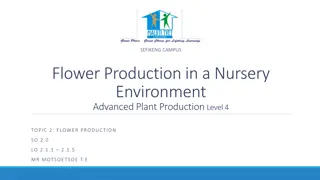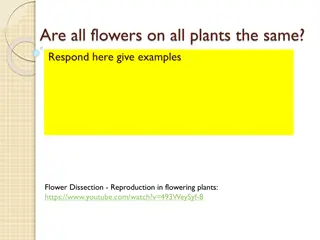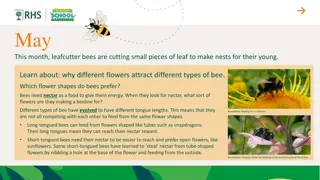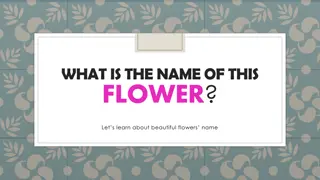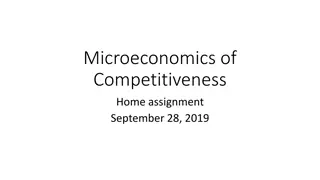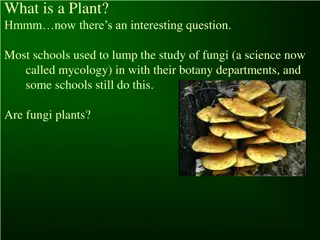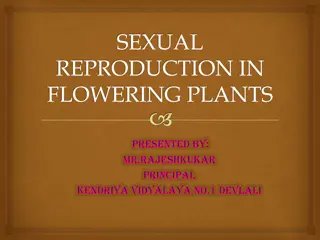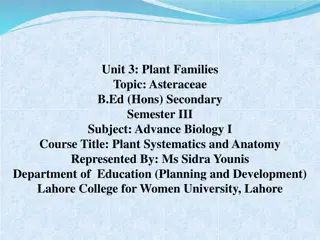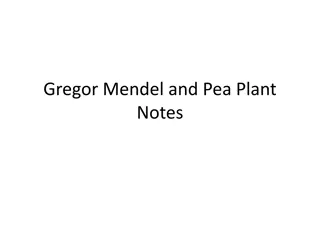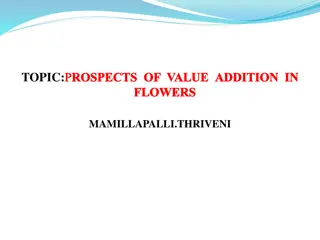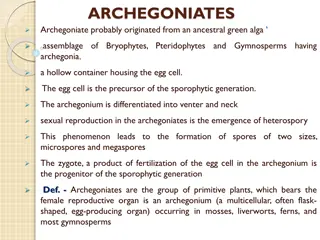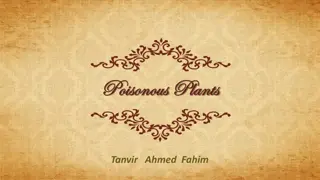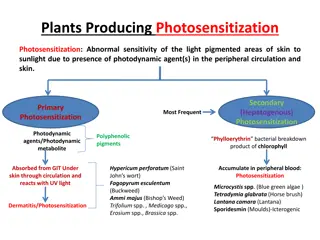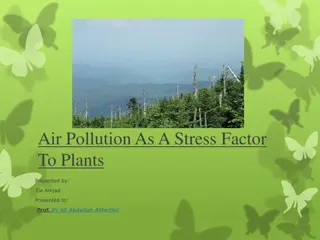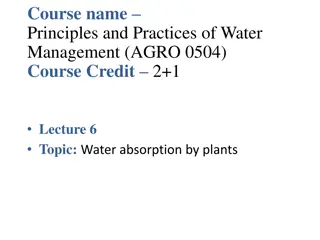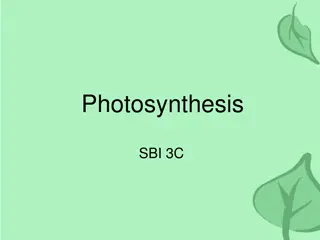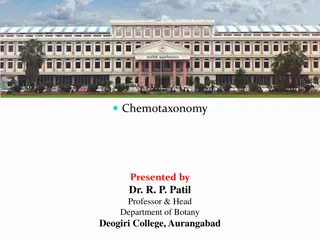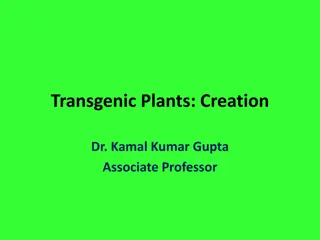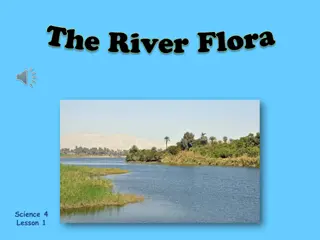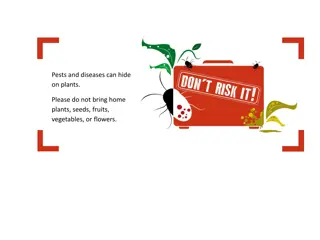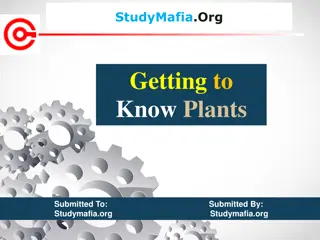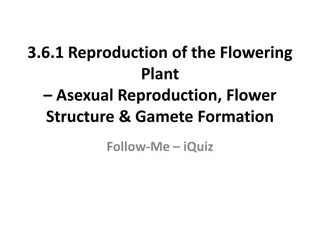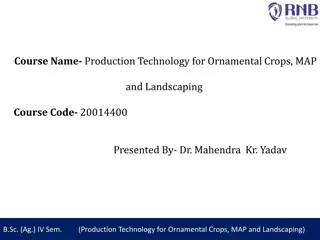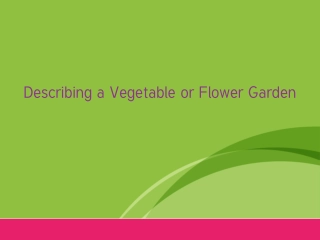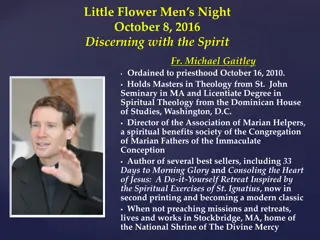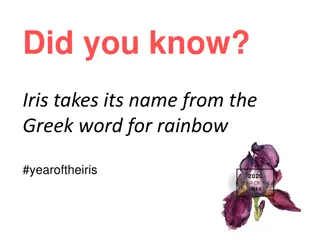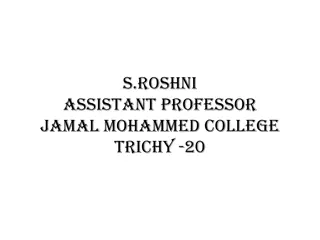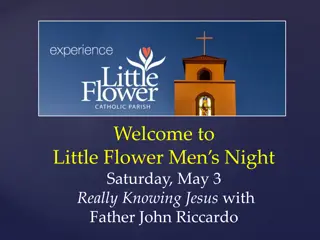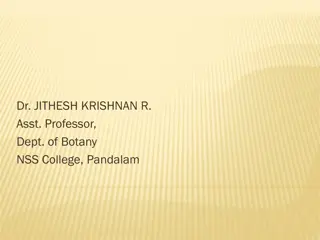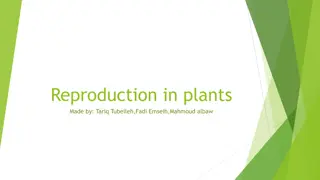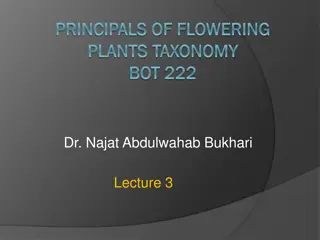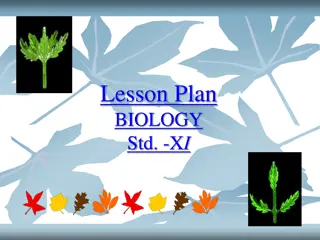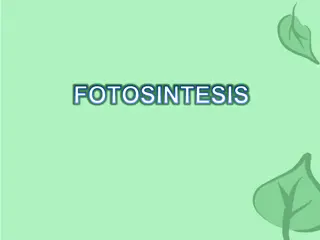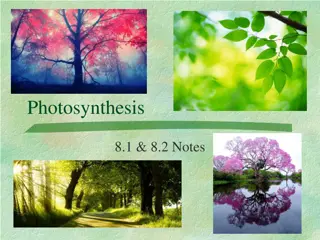Understanding Flower Structures and Inflorescences in Plants
Explore the intricate world of flower structures and inflorescences in plants, from the arrangement of floral parts like stigma, carpel, and stamen to the classification of perfect, imperfect, and incomplete flowers. Discover the various types of inflorescences and the significance of their form and position in plant identification and phylogenetic studies.
Uploaded on Oct 03, 2024 | 0 Views
Download Presentation

Please find below an Image/Link to download the presentation.
The content on the website is provided AS IS for your information and personal use only. It may not be sold, licensed, or shared on other websites without obtaining consent from the author. Download presentation by click this link. If you encounter any issues during the download, it is possible that the publisher has removed the file from their server.
E N D
Presentation Transcript
Oku o/kZu 1 Ikq"i
Basic Flower Structure stigma carpel gynoecium Flower is perfect Flower is monoecious locule style pollen ovary ovule anther filament stamen androecium petal corolla sepal perianth receptacle calyx Perianth is complete pedicel
Flowers may be attached to the plant in a few ways:- If the flower has no stem but forms in the axil of a leaf, it is called sessile. When one flower is produced, the stem holding the flower is called a peduncle. The peduncle ends with groups of flowers, each stem that holds a flower is called a pedicel. The parts of a flower are arranged in whorls on the torus. The four main parts or whorls (starting from the base of the flower or lowest node and working upwards) are : 1. Calyx 2. Corolla 3. Androecium 4. Gynoecium
PERFECT FLOWERS (Bisexual) Individual flowers contain both male (stamens) and female (pistil) reproductive structures. Majority species IMPERFECT FLOWERS (Unisexual) Either of Male or female reproductive organs missing. In some species. If an individual plant is either female or male the species is regarded as Dioecious. where unisexual male and female flowers appear on the same plant, the species is considered Monoecious. INCOMPLETE FLOWERS Missing one of the four major parts of the flower. COMPLETE FLOWERS
Ovary Superior Flower Hypogynous Ovary Half-Superior Flower Perigynous Ovary Half-Inferior Flower Epigynous Ovary Inferior
INFLORESCENCE INFLORESCENCE An inflorescence can be defined as the shoot system which serves for the formation of flowers and which is modified accordingly. The inflorescence form and position is important in routine identification as well as in the determination of phylogenetic relationships. Inflorescence types Determinate (monotelic) inflorescences Indeterminate (polytelic) inflorescences
Indeterminate ( Indeterminate (polytelic polytelic) ) Determinate ( Determinate (monotelic monotelic) )
Cymes Cymes most common type of determinate inflorescences most common type of determinate inflorescences Types of Cymes
Umbel Umbel An inflorescence in which all of the flowers often have pedicels of approximately equal length that arise from a single region at the apex of the inflorescence axis. Determinate if the flowers open from the center first and then proceed to the periphery. Indeterminate if the flowers open from the periphery first and then proceed to the center.
(B) INDETERMINATE FLORESCENCE (B) INDETERMINATE FLORESCENCE The growing point produces only lateral flowers or partial inflorescences (groups of flowers). The flowering sequence usually starts at the base (or outside) of the cluster. TYPES: Racemes Spikes Corymb. Example - Coriander Panicle. Example - Lagerstroemia Capitulum. Example Sunflower
Special types of Special types of inflorescences inflorescences
Catkin Catkin Any elongated inflorescence composed of numerous inconspicuous, usually wind pollinated flowers. Eg.. Willows, Mulberry Hypanthodium Hypanthodium The receptacle becomes spherical with a cavity inside. It opens to the outside with a small opening. Numerous small sessile flowers are produced from the inner surface of the receptacle.e.g. Ficus



